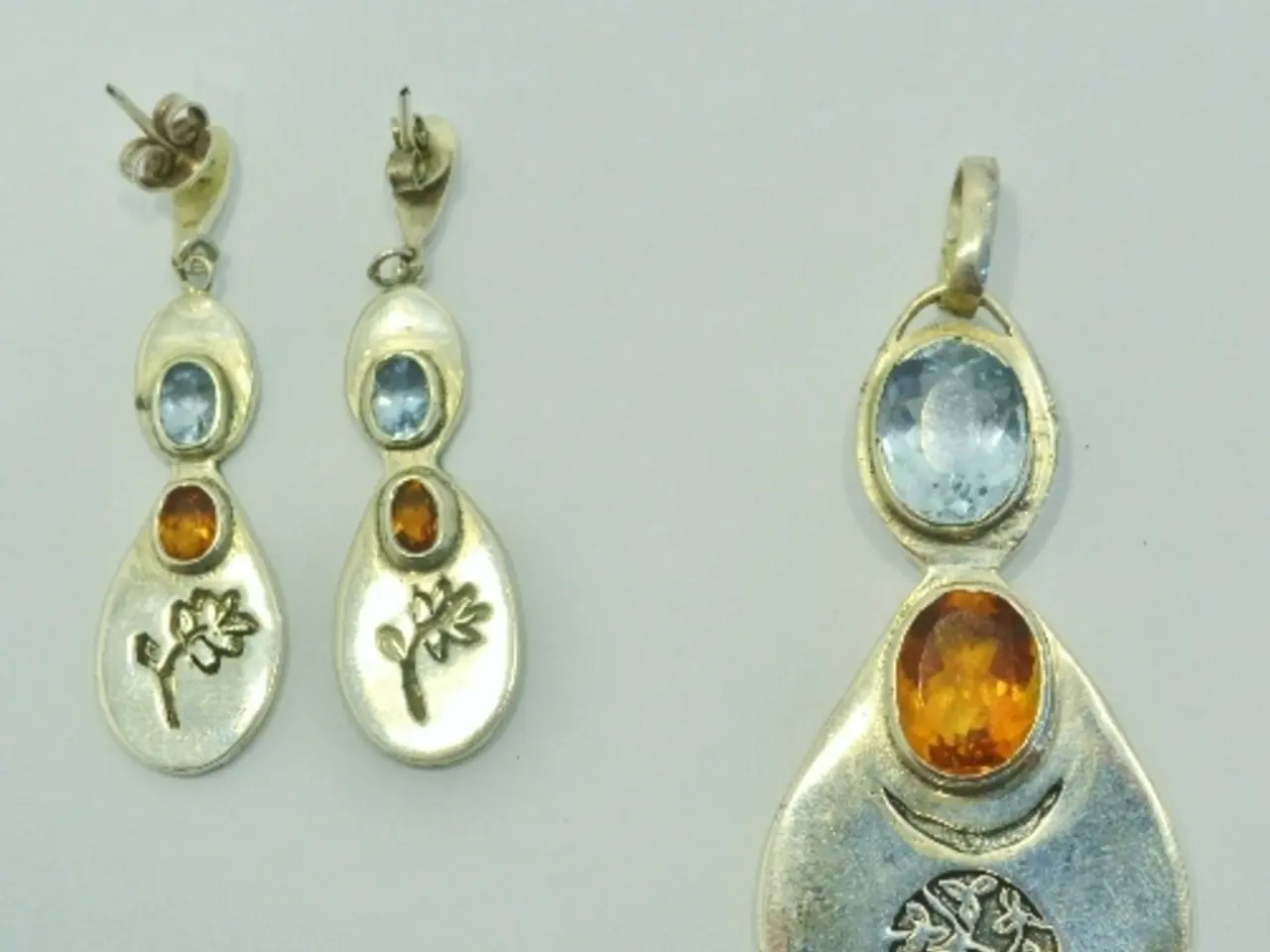Piercing Conchs: Surgical Procedure, Post-op Care, and Additional Facts
In the world of ear piercings, the conch piercing stands out for its unique location and potential benefits. Here's a rundown of what you can expect when considering a conch piercing, from the healing process to potential benefits and costs.
When it comes to choosing jewelry for a newly pierced conch, options abound. You can opt for materials such as titanium, niobium, gold (white, yellow, or rose gold, free of nickel and cadmium and 14 karat or higher), platinum, and various types of glass, including lead-free soda-lime glass, lead-free borosilicate, and fused quartz glass.
However, it's important to note that about 35% of ear piercings develop infections or other complications. If you suspect your piercing is infected, seek medical attention promptly. Do not attempt to remove the piercing yourself.
The healing process for a conch piercing can take 4-12 months. During this time, it's crucial to follow your piercer's aftercare instructions diligently. A piercer usually will not recommend a hoop for a conch piercing until after the healing process is complete.
Cartilage piercings, including conch piercings, may pose an increased risk of infection compared with lobe piercings. Possible signs of infection include pain, swelling, skin discoloration, green or yellow pus, red streaks, fever, nausea and vomiting, and persistent or worsening symptoms.
Besides infection, a piercing can also cause other complications such as cartilage piercing bumps, keloids, contact dermatitis, and abscess.
While there is a popular belief that conch piercings, or other similar ear piercings like daith piercings, offer reliable relief for migraines or anxiety, current scientific findings do not provide conclusive evidence. The proposed mechanism behind these piercings is that they stimulate ear pressure points similar to acupuncture, potentially alleviating symptoms. However, this theory is mainly supported by anecdotal reports rather than rigorous clinical research.
Specifically regarding daith piercings, which are often linked to migraine and anxiety relief, studies so far have not produced strong scientific proof. Some users report temporary improvements in migraine pain and anxiety symptoms, but these effects tend not to persist long term, and controlled trials to confirm effectiveness or distinguish placebo effects are lacking.
Regarding conch piercings, there is even less direct scientific study. Some popular sources suggest conch piercings may improve sleep, which can indirectly affect anxiety, but this remains anecdotal and unsupported by formal research.
In summary, while the concept that ear piercings stimulate acupuncture-like pressure points is a compelling theory, scientific studies confirming the benefits of conch or other ear piercings for migraine or anxiety relief are currently insufficient. Potential positive effects may be due to placebo or temporary factors, but more rigorous clinical research is needed to establish any causal link.
Lastly, a conch piercing is typically more painful than piercings in the earlobe. The cost of a conch piercing will vary among piercers, but anecdotal evidence suggests that it is typically somewhere between $30 and $90. It's essential to receive a conch piercing from a professional piercer, and the Association of Professional Piercers allows a person to search for a professional piercer who is local to them.
Options for jewelry for a conch piercing may include studs with flat backs, bars with small balls on each end, and hoops. Remember, following proper aftercare and choosing the right jewelry can significantly improve the healing process and overall experience of your conch piercing.
- In the realm of medical-conditions and chronic diseases, depression is a mental health issue that requires attention, and predictive analytics in health and wellness sector can help anticipate its onset.
- Scientific research on the effectiveness of nutrition and fitness-and-exercise in preventing or managing depression has yielded promising results.
- CBD, a compound found in cannabis plants, has shown promise in treating depression and anxiety, although more research is needed to confirm its efficacy.
- Psoriasis, a chronic skin condition, can be managed through a combination of skin-care, diet, and possibly medication.
- Obesity is closely linked to numerous health problems, and AQ (Air Quality) plays a significant role in obesity development and management due to its influence on metabolism.
- While there is a lack of scientific evidence on the potential benefits of conch piercings for migraines, CBD oil has been shown to have some positive effects on migraine relief through its interaction with the endocannabinoid system.




